|
Recent Entries to this Blog
Is It Really.....?
Posted: 16 Mar 2015 Posted: 06 Oct 2014 Posted: 29 Aug 2014 Posted: 28 Aug 2014 Posted: 30 Jul 2014 All Entries |
Jewell's BlogRamblings from the Puget Sound
Semps and Sedums: Who Could Ask for Anything More?
Category: Starting and Maintaining the Garden | Posted: Thu Sep 02, 2010 1:17 am Ok, I know that I am a bit compulsive..isn't everyone. Really if you love something then you go for it. Well, the semp and sedum bug struck me last year about this time. It is amazing how much variety there is in these plants. In just one short year. 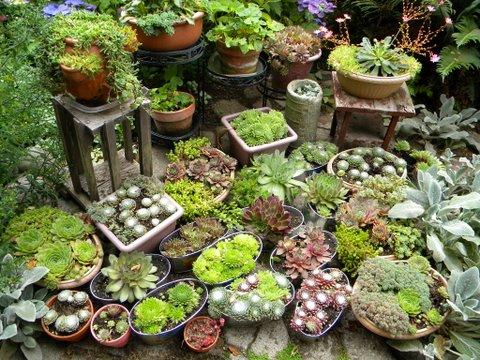 [/URL] [/URL]
Semp collection ( photo / image / picture from Jewell's Garden ) I am totally blown away with the varieties of size and colors as they have grown. 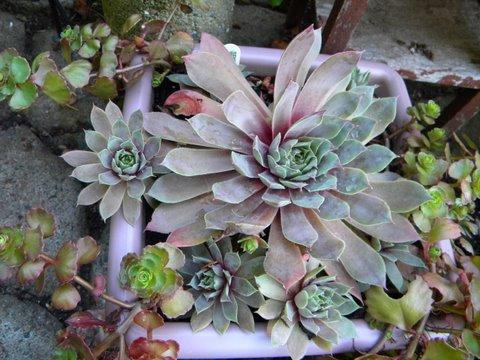
( photo / image / picture from Jewell's Garden ) 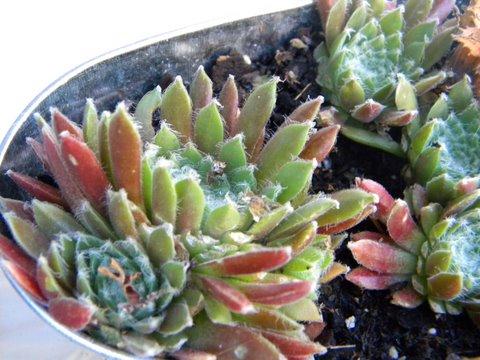
( photo / image / picture from Jewell's Garden ) 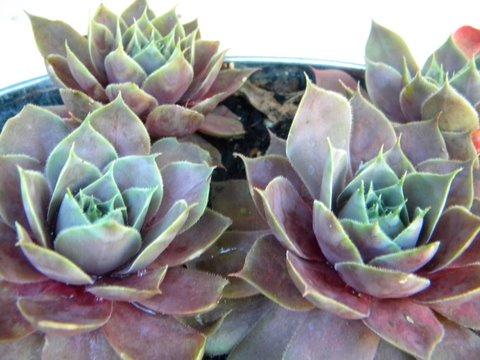
( photo / image / picture from Jewell's Garden ) 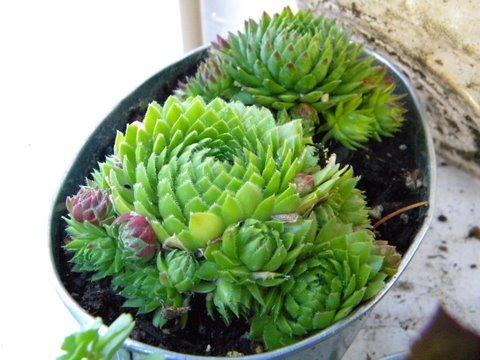
( photo / image / picture from Jewell's Garden ) 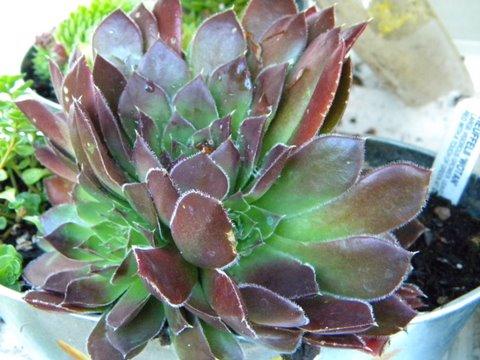
wonton ( photo / image / picture from Jewell's Garden ) 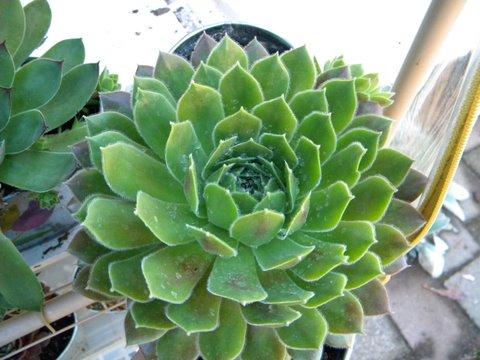
( photo / image / picture from Jewell's Garden ) 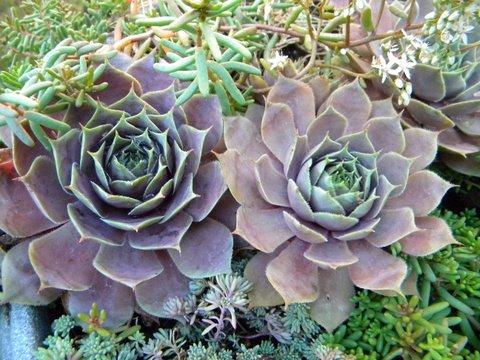
( photo / image / picture from Jewell's Garden ) 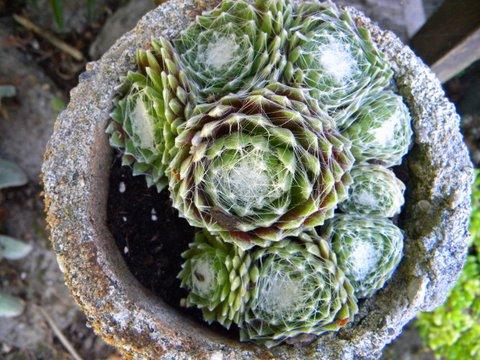
2 different cobwebs ( photo / image / picture from Jewell's Garden ) 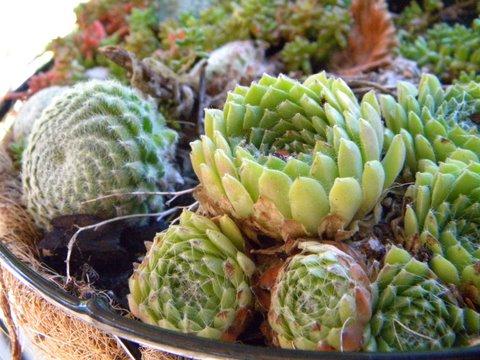
2 different semps ( photo / image / picture from Jewell's Garden ) 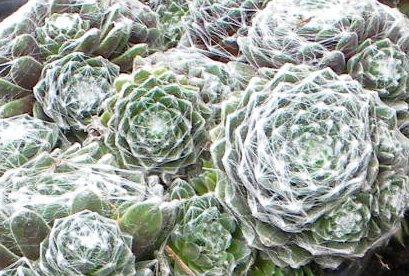
( photo / image / picture from Jewell's Garden ) They are all that I have used as hanging plants this summer. Unfortuately most I emptied for planters at the school, so only have a few left to winter over. All the more fun to start with some new ones in the spring. 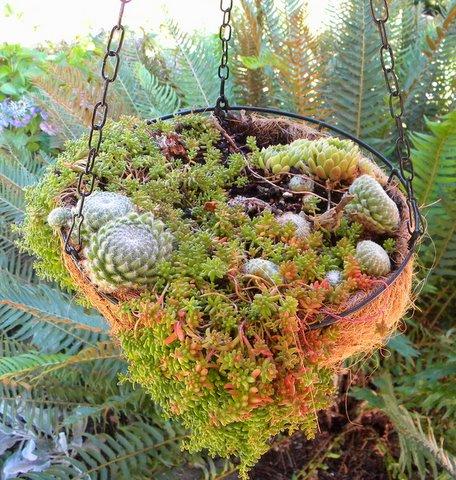
sedum and semps in coconut fiber hanging basket ( photo / image / picture from Jewell's Garden ) 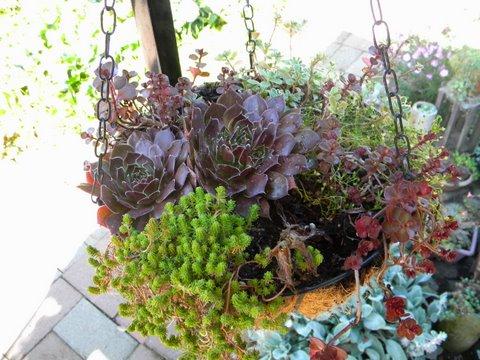
semp and sedum basket ( photo / image / picture from Jewell's Garden ) This blog entry has been viewed 599 times
From the Looks of This You'd Think I Had Lots of Seeds
Category: Starting and Maintaining the Garden | Posted: Thu Jan 28, 2010 5:53 am Gardening takes time and timing. Sometimes it doesn't all fall together like you think it will. This winter was one example with the hard freeze and a few lost plants that will make room for new plants (a friend after participating in a cookie exchanged decided to host a plant exchange so I am set...but that is another story...maybe). Today I saw quite a few dried bean pods hanging on the vines along the fence for the garden. I flashed back to November. I wondered if they will self sow? Nature hasn't provided any warm weather for sprouting yet. Don't think I'll try harvesting them. Best to know when to step back and wait considering all-in-all. For years I have collected and saved seeds from my rich, robust flavored scarlet runner beans I grow yearly. I thought of it as second nature. Kind of a comforting fall ritual. I was a little late in collecting pods and seeds this last fall. 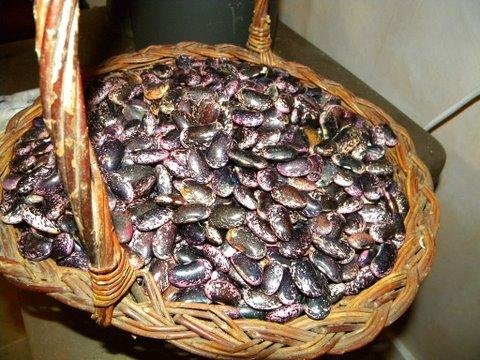
A nice little harvest of scarlet runner beans ( photo / image / picture from Jewell's Garden ) I spent the day picking pods and shelling beans. I had collected over a gallon of beans and they looked great. I would even have enough for a couple of big pots of bean soup. Or at least I thought I would. For the first time ever, I collected beans that were a bit damp. Bringing them into the warm house I learned that beans can sprout in less than 24 hours. Big oops there! 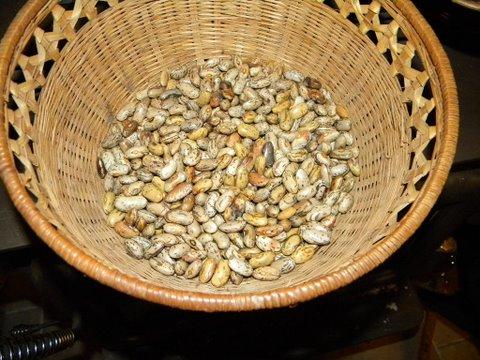
A few Cascade Giant Stringless Beans ( photo / image / picture from Jewell's Garden ) Even my hubby's Cascade Giants did the sprouting "thing". Oh well, I figured I could just make soup out of them. They make great soup. Sprouting should just increase the nutritional value right? Best laid plans detoured but still looking promising. I laid down for a little nap waking up to the aroma of burnt beans filling the air. I couldn't help but giggle (although I worried about wrecking my good soup pot) at the irony of it all. I quickly took them out to the compost and scraped the pot out. Guess this was just not the year to save bean seeds. Oh well, gardening keeps us humble and helps to keep our sense of humor going. On the bright side my Hooker's corn actually matured for eating and seed saving. These small corn plants and ears are perfect for my small yard and a heirloom variety bred here in Olympia since the 1930's. My second planting in last week of July actually matured into pretty little ears that turn from white (that's the eating time) to purple/black (getting ready to dry). Lots of seeds to plant for this next year for these sweet little ears of corn. 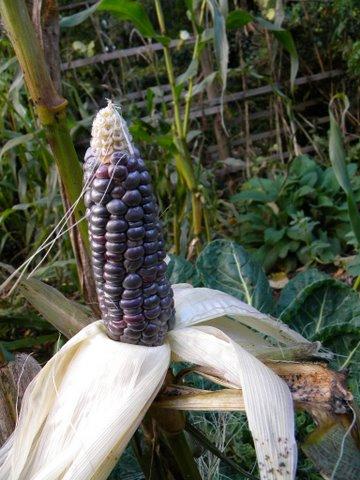
Mature Hooker's Corn ready for drying ( photo / image / picture from Jewell's Garden ) 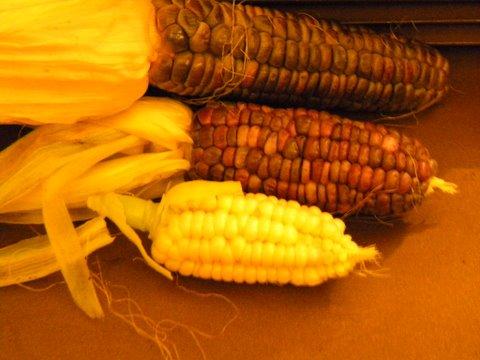
White turns blue for Hooker's Corn ( photo / image / picture from Jewell's Garden ) Yeh, it is the plant exchange that got me thinking seeds and reminiscing. At work we were talking of starting vegetable seeds and trading them as well as flowers, perennials and what-not-plants. A May Day celebration with hot drinks and pastries. It's never too early to start planning and dreaming. All because of a cookie exchange. This blog entry has been viewed 695 times
Plant exchange! Why not more????
Category: Starting and Maintaining the Garden | Posted: Sat May 30, 2009 7:44 am Last week-end I went to a plant exchange that I had been invited to attend. It's true that I had been potting up extra plants all spring for friends and co-workers. Many flats of red blooming strawberries, bleeding hearts, corisian mint, angel tears, sweetwoodruff, mini iris, golden bamboo, chinese ground orchids, italian plum trees and anything that was encroaching into the walkways or onto the patios. Wow! It was exciting to find out I'm not the only person who hates to compost good plants in the need to maintain a garden. I managed to give away over a couple hundred pots of varying sizes during the spring, but I had a few left overs. I just don't seem to know when to stop potting and to start recycling/composting. (the night before the exchange I potted up another flat of hellebore starts that had self-sown in the front yard) 
plant starts ( photo / image / picture from Jewell2009's Garden ) After my last flurry of potting I packed up the car (oh dear me, it was full of plants) and headed off the next morning at the prescribed time to attend the exchange. WOW! There was about 50-75 wonderful gardeners of all ages at the exchange. The variety of plants was awe inspiring and some of the pots were five gallon size. I really didn't want to take too much, because I was feeling "planted-out", but how could I resist. There was a real pretty little sedum/succulent, shasta daisies and fall asters in two gallon pots, and perennial sun flowers, tall white/green ornamental grass and bell flowers (Campanula) I felt I made out like a bandit, but compared to others took very little. 
Succulent ( photo / image / picture from Jewell2009's Garden ) It was such a pleasant morning drinking tea/coffee, eating a scone and visiting with other gardeners discussing the pros and cons of the plants that were there. Everyone got to chose twice (making sure everyone got two plants that they really wanted), and then have whatever else they wanted that was still available (which was quite a lot). I can't wait until next year, and I can continue potting plants knowing someone will want them. 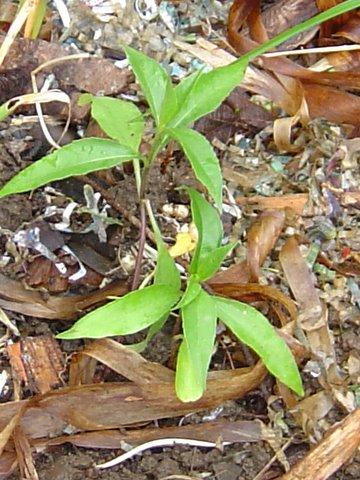
Perennial Sunflower start ( photo / image / picture from Jewell2009's Garden ) I can't wait to see how my new arrivals (bell flowers, perennial sunflowers, and sedum) will do in my yard, and it is good to have old friends (shasta daisies and fall asters) growing in the yard again. This blog entry has been viewed 763 times
No Till Gardening - Lazy gardening is good gardening
Category: Starting and Maintaining the Garden | Posted: Sat Mar 28, 2009 6:44 am As I get older and work more hours with less free time I have developed a bed method of gardening that layers organic matter over the seasons. Surprisingly I keep coming across articles of other people using similar methods with a variety of names. I have heard it called "Lasagna gardening", "No-dig gardening" and "No-till gardening". I just call it the "Lazy Gardener's Gardening". At any rate it is becoming popular and is actually more healthy for your garden. Soil is a fine network of bacteria, microbes and earthworms all working together. If we don't disturb it we actually keep more organic matter in the soil. Some of the best things about "lazy gardening" is that you are mulching and mulching and mulching which is keeping the weeds down, less weeding and the moisture in so less watering. Below is a couple of links for anyone interested. A Google search will turn up lots. http://extension.oregonstate.edu/news/story.php?S_No=870&storyType=garden http://seattletimes.nwsource.com/html/homegarden/2008889169_zhom19gardennotill.html www.no-dig-vegetablegarden.com/no-till-gardening.html This blog entry has been viewed 1060 times
Starting and Maintaining a Garden - Lazy Gardening
Category: Starting and Maintaining the Garden | Posted: Fri Feb 13, 2009 6:25 pm I am a lazy gardener getting lazier all the time. I have favored bed gardens and have had beds of varying sizes through out the yard over the years. When I first started gardening I always double dug the space burying any sod face down to add nutrients to the soil. Haven't done that in years. I used to be totally organic. The worms and ladybugs do their jobs and I provide the organics. Now I occasionally resort to using Roundup to keep an area clear for moss and groundcovers, and to keep morning glory and blackberries in check (a nasty combination that will take over a yard in short order in this area). We have always composted the yard clippings right on the beds. I especially like the ivy hedge trimmings that get run-over with the lawn mover until they are nicely chopped. We do that with the fruit tree, and bamboo timmings also. All make a nice cheap mulch. Lawn clippings always go in the recycling barrel, since they tend to restart themselves in the beds. This last year I planted a vegie garden for the first time in years. Our old dobie, T.M. passed away in October of 1997. T.M., ate most my garden every year. I got tired of planting just for him. He was quite the vegetarian, and fencing the garden didn't seem to slow him down. After 4 years of focusing only on herb, and ornamental beds, and laying bricks for patio areas I was ready to try vegetable gardening again. I laid out cardboard to kill the weeds, and overlayed it with leaves. Last spring I composted the remaining cardboard that hadn't decomposed and sowed the seeds or poked holes in the cardboard to plant the starts. It was so easy. (Never again will I double dig my beds to start them.) I also put up the fencing around the gardening space. (We still have dobies and although they aren't as persistant as old T.M. they can eat their weight in fruit and vegies.) There were some nice surprises with this no dig method. The area where I set out onion sets had the most beautiful stand of volunteer annual poppies. Along the edges of the garden sunflower seeds provided a colorful display and additional bird/squirrel food in late summer. It was wonderful having a bumper crop of tomatoes, fresh sugar snap peas, kale in the winter, and seeing/eating my favorite scarlet runner beans. There is nothing like having squash blossoms to saute up; and grilling those baby squash on the grill. If any of the dogs get greedy with my garden again I might be tempted to put up an electric fence to keep them out. T.M. WAS cute standing on his hind legs to reach the last of the runner beans or apples. This blog entry has been viewed 860 times
You're reading one of many blogs on GardenStew.com.
Register for free and start your own blog today. |
Entries by Category
All Categories
|
